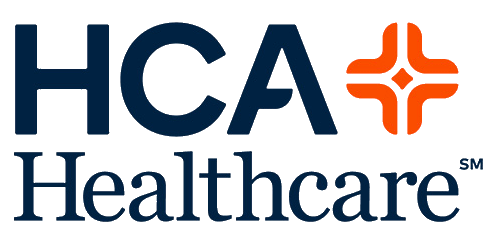Through SADA’s clear project plan and quick rollout, Kravet found Gemini Enterprise is the right foundation for enterprise AI agents, saving hours on search and producing more relevant results.
/ Learn moreHCA Healthcare accelerates COVID-19 response through a national portal

/ AT A GLANCE
Medical professionals and researchers across the globe are working tirelessly to stop the spread of the COVID-19 virus. To effectively fight the pandemic, providers need to be able to predict patient volumes, given the scarcity of supplies among other factors that impact care today. That requires technology that can seamlessly integrate multiple data sources and quickly produce actionable insights.

INDUSTRY
ANALYTICS
GENERATES

Client
Medical professionals and researchers across the globe are working tirelessly to stop the spread of the COVID-19 virus. To effectively fight the pandemic, providers need to be able to predict patient volumes, given the scarcity of supplies among other factors that impact care today. That requires technology that can seamlessly integrate multiple data sources and quickly produce actionable insights.
HCA Healthcare, one of the largest healthcare providers in the U.S., is an organization with a mission strongly rooted in the care of people and betterment of their livelihoods. Dr. Edmund Jackson, Chief Data Officer at HCA Healthcare, and his team are focused on giving HCA Healthcare’s caregivers and leaders, and the nation at large, accurate visibility into the spread of the virus.
Challenge
“In the beginning of the outbreak, it was apparent there was no national portal in the U.S. that offered a nationwide perspective into the scope and spread of COVID-19,” says Dr. Edmund Jackson. “There were—and still are—so many unanswered questions about this virus. We knew we needed to create a central repository of reliable information to help researchers and healthcare providers move closer to overcoming the pandemic.”
Dr. Edmund Jackson
HCA Healthcare sought to understand community outbreaks of the virus in a deeper and more proactive way and make that information accessible to its own hospitals, as well as public health officials, businesses, and consumers. This would better inform decisions surrounding safe reopenings, the impact of public policy decisions such as mask mandates, and more.
Though HCA Healthcare had visibility through its hospitals in 20 states across the U.S, the company wanted to better capture and communicate the spread of the virus across the entire country. At the time of project launch, healthcare providers lacked a uniform set of guidelines and methodologies to report to track the spread. This also meant that healthcare providers were largely on their own when it came to understanding how the national spread of the virus would impact their own local hospitals and communities.
“Rapid, reliable access to data is critical,” says Dr. Jackson. “We needed to improve how people could capture and share data, which was proving to be a challenge. We decided to build a centralized data portal called the National Response Portal (NRP) for healthcare providers.” To achieve its goal, HCA Healthcare worked closely with technology services provider SADA and Google Cloud.
Solution
While using available, proven technologies gave HCA Healthcare and SADA a head start with the portal, the complexity of bringing everything together was an entirely different story. Scale was one of the biggest infrastructure challenges, as HCA and SADA needed to ensure that the portal was powerful enough to handle more than one million visitors at once, often resulting in requests for tens of thousands of visualizations at any moment.
“We needed to push as much of the compute as possible out to end users’ devices, and the data they used had to be located as close to their machines as possible,” says Michael Ames, Senior Director of Healthcare and Life Sciences at SADA. “We use Google’s content delivery network and just-in-time data loading along with client-side rendering to achieve worldwide access with almost infinite scalability.”
Michael Ames, Senior Director of Healthcare and Life Sciences at SADA
This required creative and experienced problem solving from the HCA Healthcare and SADA teams, particularly those experienced in making applications scale. In addition, given the types of data and uses of the portal, having strong security and identity and access management (IAM) policies were central to their efforts and had to be addressed without sacrificing interoperability and ease of access.
HCA Healthcare is a learning health system that uses the significant data it collects from approximately 35 million annual patient care episodes to inform and improve the care it provides to patients. HCA Healthcare’s national clinical data warehouse, which receives information from the electronic health record, is the heart of HCA’s data ecosystem, providing the ability to aggregate and analyze data streams in real time. With years of institutional security knowledge and building on Google Cloud’s HIPAA-compliant healthcare and life science products, SADA could apply industry best practices to keep any data contained in the portal secure. No protected health information will be included, but the system does depend on daily incoming information about the performance of individual hospitals, which is business sensitive and must be protected. All of this took place within the backdrop of a deadly and fast-spreading virus.
“This project required deep knowledge of AI, and consumer-facing platforms, as well as healthcare,” says Dr. Jackson. “Google brought together the ideal combination of product, people, and partners. Google Cloud’s healthcare-specific products along with SADA’s expertise in the healthcare IT space made this partnership the perfect choice to move quickly and intelligently.”
Dr. Edmund Jackson
Given the project’s urgency, HCA Healthcare, Google, and SADA staff worked around the clock on design, testing, development, redesigns, retesting, and more until the NRP was launched.
“It was inspiring to watch people from HCA Healthcare, Google, and SADA make sacrifices out of their commitment to do something for the greater good,” says Michael. “There was no glory or money to be made in this work. We are humbled to contribute to any technical innovation that moves us all closer to overcoming this pandemic.”
Aligning with the right technology infrastructure
The portal is offered free of charge, so cost management was a key design objective. The engineers at Google and SADA wanted a low-maintenance, fully automated solution. They achieved this with a combination of technologies: Cloud Scheduler and Cloud Functions automate data ingestion to Cloud Storage every day. Scheduled Queries automate backend data transforms into BigQuery and run data quality reports, which are automatically delivered each day in Google Data Studio.
Engineers from Google Cloud and SADA built the portal’s data warehouse on BigQuery, assembling public and private data sources into clear and consistent data models that could be queried and analyzed. Cloud Storage, as well as scheduling and automation features in BigQuery, pulls the data together and prepares it for presentation.
SADA also decided to use Looker for backend data chart and graph prototyping, which can then be exported to JSON files and loaded in real time into the portal and rendered for viewing. The team deployed Looker’s COVID Block, which provides pre-built models, dashboards, and explores to snap into SADA’s COVID public datasets to quickly provide a more complete view of the data. By leveraging Looker’s semantic layer, SADA has been able to develop and govern advanced KPIs in a rapidly changing landscape.
The developer-friendly nature of Looker’s APIs allowed SADA to further govern analytics for their application. Combined with other Google Cloud solutions such as Google Kubernetes Engine, Google Maps APIs, and Cloud CDN, the portal provided fast, secure access to critical public health data.
Google Maps Platform offered an additional foundation for the portal, as HCA Healthcare worked to connect data points across regions. Integrations established between the NRP and Google Maps Platform can help people find the nearest doctor’s office, essential services, and more. Those same capabilities will enable robust projections for hot spots across the U.S.
As COVID-19 can be more effectively tracked with the right visibility into travel behaviors and patterns, Google Maps Platform resonated with HCA Healthcare as a powerful tracing tool.
Expanding the NRP for enhanced public health management
While the National Response Portal is still relatively new, HCA Healthcare has seen interest from organizations spanning healthcare to entertainment and beyond. For example, some entertainment businesses have used the aggregated county-level data to make better-informed choices regarding safely reopening their operations.
Beyond providing medical researchers and businesses with access to the de-identified aggregated data within the NRP, HCA Healthcare has been able to make use of the system for its own hospitals. Together, HCA, SADA, and Google Cloud are collaborating to further enhance NRP with forecasting models and the ability to anticipate outbreaks in communities across the U.S. This includes a pivot toward making use of BigQuery public datasets to leverage data that has already been gathered and prepared.
HCA Healthcare also believes the NRP has the potential to be a strong resource to manage other threats to public health, including natural disasters. As the healthcare system has its largest footprint in the southern U.S., the organization responds to the threat of hurricanes every year. The NRP will continue to grow as it brings together new types of data, making NRP a powerful tool in how we respond to public health crises and disasters.
“Now more than ever we need to come together to solve problems. The NRP helps us get there,” says Dr. Jackson. “By providing quick access to reliable aggregated data, the NRP is an important tool in helping communities overcome this unprecedented challenge.”
Dr. Edmund Jackson
Results
- Provides detailed COVID-19 analytics for over 3,100 US counties
- Increases accessibility of impartial, highly valuable COVID-19 data insights for up to 1 million simultaneous users
- Generates 30,000 new analytical views daily, revealing insights and trends for every state and county in the nation
- Enables forecasting models to predict future community hot spots, resource allocation needs, and more
Source: Google Cloud Customer Stories
Rapid, reliable access to data is critical. We needed to improve how people could capture and share data, which was proving to be a challenge. We decided to build a centralized data portal called the National Response Portal (NRP) for healthcare providers.”
— Dr. Edmund Jackson
More customer stories
What we're up to
Solve not just for today but for what's next.
We'll help you harness the immense power of Google Cloud to solve your business challenge and transform the way you work.

